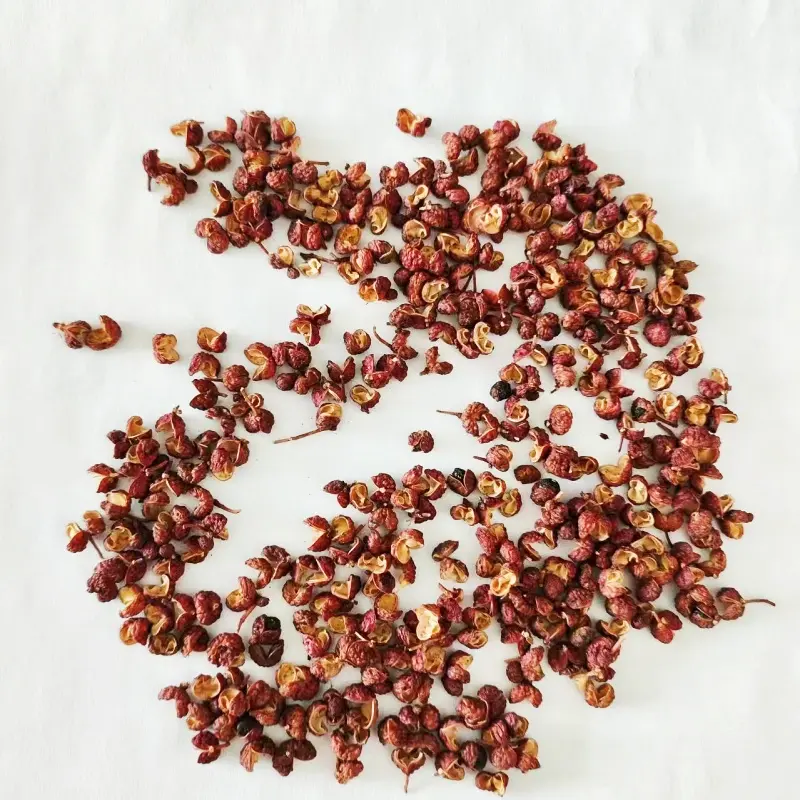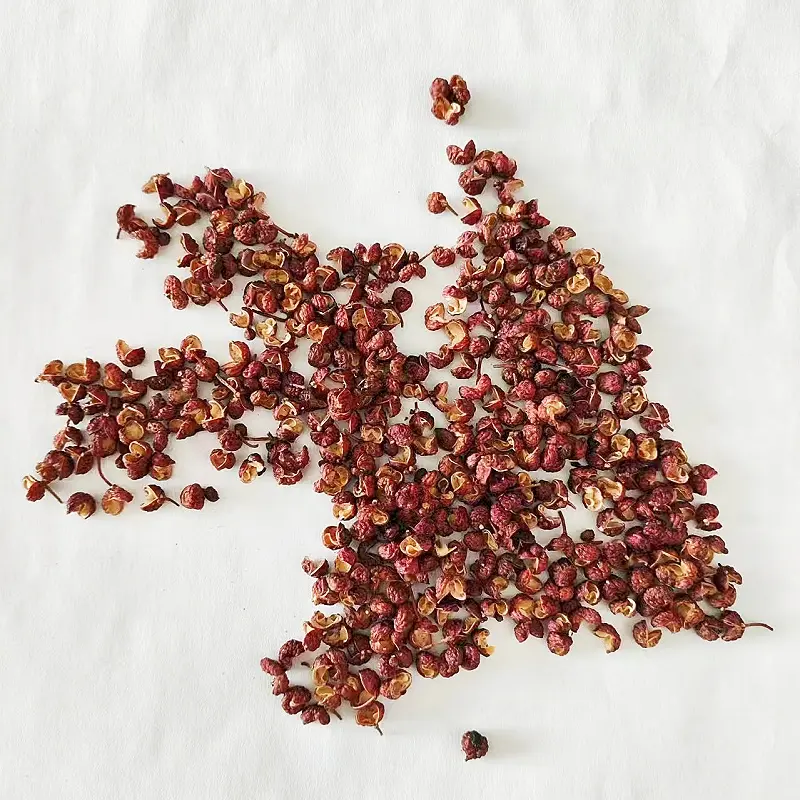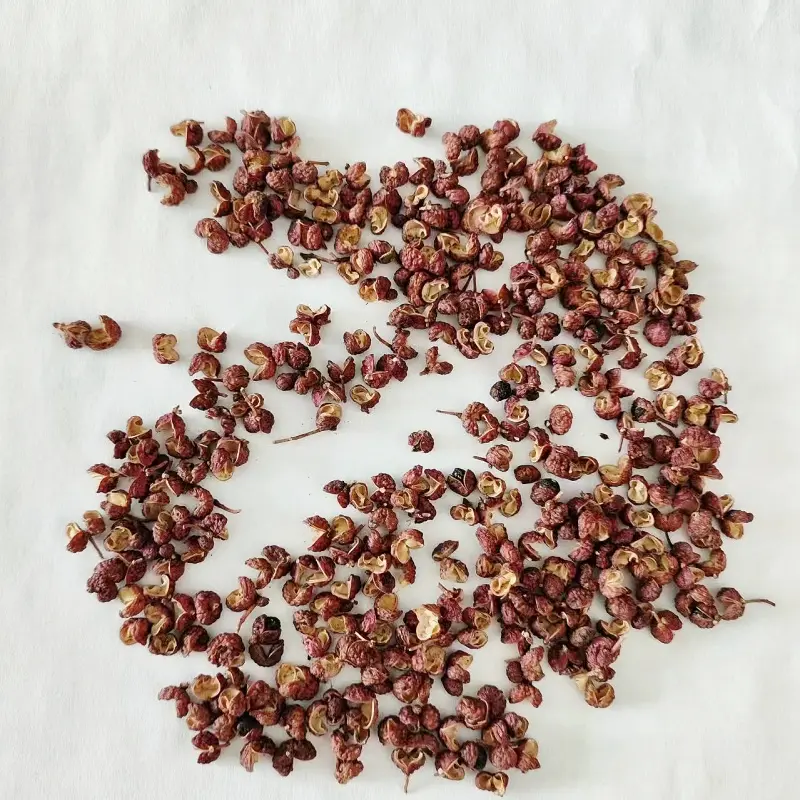1. Origins and Botany
While green, black, and white peppercorns are all fruits of the Piper nigrum plant, Sichuan peppercorns come from a different botanical family. They are the dried husks of the berries from Zanthoxylum species, shrubs that grow widely in the Sichuan, Guizhou, and Yunnan provinces of China. The two most common varieties are green Sichuan peppercorns (harvested earlier for a citrusy taste) and red Sichuan peppercorns (mature, with deeper earthy notes).
Sichuan peppercorns have been cultivated in China for over 2,000 years and are a fundamental part of the "mala" (麻辣) flavor in Sichuan cuisine, combining spiciness and numbing sensations.
In 2023, China produced over 30,000 tons of Sichuan peppercorns, with demand growing rapidly both domestically and internationally.
2. Processing and Handling Techniques
Processing plays a vital role in determining the flavor and shelf life of peppercorns.
Traditional Green, Black, and White Peppercorns:
Green peppercorns are quickly dried or brined to retain their fresh taste.
Black peppercorns are sun-dried, developing a wrinkled surface.
White peppercorns are soaked to remove the outer layer, giving them a cleaner taste.
Sichuan Green Peppercorns:
These are harvested early in the season (July–August) and dried in the shade to preserve their vivid green color and volatile oils.
They contain a higher amount of hydroxy-alpha-sanshool, the compound responsible for the tingling and numbing effect.
Example: Fresh Sichuan green peppercorns are also preserved in oil for quick use in dishes such as stir-fries and cold noodles.
3. Flavor Profiles and Sensory Experience
Each type of peppercorn offers a distinct flavor:
Green Peppercorns: Fresh, mildly spicy, and slightly floral.
Black Peppercorns: Strong, pungent, with sharp heat and earthy undertones.
White Peppercorns: Milder, earthy, and fermented.
Pink Peppercorns: Fruity, floral, and sweet, with minimal heat.
Sichuan Green Peppercorns: Bright, citrusy, with a numbing, tingling sensation (called “麻”, or ma).
Example: A typical Sichuan dish, Chongqing Mala Hot Pot (重庆火锅), heavily features Sichuan peppercorns to balance the heat of chili peppers with a numbing effect.
4. Culinary Applications
Each peppercorn has its ideal culinary applications:
Green Peppercorns: Used in sauces like peppercorn cream sauce for steak and in Thai green curry.
Black Peppercorns: Widely used in global cuisines, such as in Cacio e Pepe or Indian pepper chicken.
White Peppercorns: Popular in Chinese soups and French white sauces, such as béchamel.
Pink Peppercorns: Garnish for salads, seafood, or used in desserts and cocktails.
Sichuan Green Peppercorns: Found in hotpot, Sichuan chicken (辣子鸡), and spicy cold noodle dishes (凉面).
Example: "Mala Xiang Guo" (麻辣香锅) is a dry hotpot dish where Sichuan green peppercorns enhance the flavor with a numbing sensation that contrasts with the heat of dried chilies.
5. Health Benefits
Each type of peppercorn offers a range of health benefits due to its unique chemical composition.
Traditional Peppercorns (Green, Black, White, Pink):
Traditional peppercorns contain piperine, a powerful alkaloid that has been shown to enhance the absorption of key nutrients like curcumin, selenium, and vitamins B and C by up to 2,000%. Piperine also exhibits anti-inflammatory properties by inhibiting certain pro-inflammatory enzymes, making it beneficial for managing conditions like arthritis. It has also been linked to improved digestion, stimulating the secretion of digestive enzymes, and supporting healthy metabolism. Additionally, piperine may improve brain function by boosting dopamine and serotonin levels, potentially alleviating symptoms of depression and anxiety. Studies suggest that pepper’s antioxidants can also combat oxidative stress, reducing the risk of chronic diseases.
Sichuan Green Peppercorns:
In contrast, Sichuan peppercorns are rich in sanshools, compounds known for their unique numbing effect and pain-relieving properties. Sanshools block certain nerve receptors responsible for pain, making Sichuan peppercorns useful for managing neuropathic pain. They also promote circulation by improving blood vessel function, which can reduce swelling and discomfort. Furthermore, Sichuan peppercorns are widely used in Traditional Chinese Medicine (TCM) for their ability to stimulate digestion, alleviate bloating, and expel dampness from the body. The peppercorns’ antimicrobial properties also help maintain a healthy gut by reducing harmful bacteria. Regular consumption of Sichuan peppercorns in moderation may support gut health, pain management, and circulation.
These health benefits make both traditional and Sichuan peppercorns valuable not only as culinary spices but also as functional ingredients with therapeutic potential.
6. Market Trends and Pricing
Green Peppercorns: $20–30 per kilogram.
Black Peppercorns: $10–15 per kilogram, accounting for 90% of global pepper usage.
White Peppercorns: Slightly more expensive, at $12–20 per kilogram, due to their additional processing.
Pink Peppercorns: $50–70 per kilogram, driven by their niche use and delicate nature.
Sichuan Green Peppercorns: Typically sold for $40–50 per kilogram, reflecting their complex harvesting process and growing international popularity.
China’s export of Sichuan peppercorns has grown by more than 25% year-over-year since 2020, driven by increased interest in Sichuan cuisine globally. Specialty grocers and online platforms now carry Sichuan green peppercorns, catering to chefs looking to replicate authentic Chinese flavors.
7. Shelf Life and Storage
Proper storage is essential to preserve the freshness, aroma, and potency of peppercorns. Each type of peppercorn varies in terms of shelf life due to differences in processing and fragility.
Green Peppercorns:
Fresh green peppercorns are highly perishable and last only 2–3 weeks in the refrigerator. However, brined or freeze-dried versions can be stored for up to 1 year. Brined peppercorns should be kept in their original liquid in airtight jars and refrigerated after opening. Freeze-dried forms should be stored in cool, dry environments to prevent moisture absorption, which could compromise their texture and flavor.
Black Peppercorns:
Black peppercorns are known for their longevity, maintaining their potency for 2–3 years when stored in airtight containers away from heat, moisture, and light. Over time, ground black pepper loses its aroma faster than whole peppercorns, making it advisable to grind them only when needed.
White Peppercorns:
White peppercorns, lacking the protective outer layer, have a shorter shelf life, typically lasting 1–2 years. They are more prone to moisture absorption and may develop an unpleasant odor if not properly stored. Keep them sealed in dry, cool places to maximize freshness.
Pink Peppercorns:
Due to their delicate nature, pink peppercorns lose flavor and aroma within 6 months. To prevent rancidity, store them in airtight containers, away from direct sunlight and heat.
Sichuan Green Peppercorns:
Sichuan green peppercorns retain their vibrant flavor and numbing effects best when used within 12 months. They should be kept in airtight jars in a cool, dark place to protect their volatile oils. Exposure to moisture or heat can diminish their potency, so it is essential to reseal containers tightly after each use. Storing oil-preserved Sichuan peppercorns in the refrigerator will extend their shelf life and ensure their flavor remains intact.
In all cases, peppercorns are best stored in airtight containers to prevent oxidation, which can dull their flavor over time. Proper handling ensures these spices maintain their optimal quality and flavor for culinary use.
8. Conclusion
In conclusion, each peppercorn variety brings its own character to the culinary world. Green, black, white, and pink peppercorns from Piper nigrum offer varying intensities of heat and spice, with black pepper being the most widely used. However, Sichuan green peppercorns stand apart due to their unique botanical origin and sensory properties, providing a vibrant, numbing experience that has become central to Sichuan cuisine.
Understanding the distinct qualities and ideal uses of these peppercorns allows chefs to make more informed choices when preparing dishes. Whether it’s a brined green peppercorn sauce, a black pepper rub, or a mala hotpot enriched with Sichuan green peppercorns, each spice offers a unique opportunity to enhance flavor and complexity. With growing global interest in authentic Chinese flavors, Sichuan peppercorns are poised to become even more prominent in international kitchens.
Looking to Purchase Bulk Sichuan Peppercorns?
Our company specializes in supplying high-quality Sichuan peppercorns in bulk, including both green and red varieties. Sourced directly from the best farms in Sichuan, Guizhou, and Yunnan, our peppercorns are carefully selected to ensure peak freshness, vibrant flavor, and potent numbing effects. We guarantee competitive pricing, exceptional service, and fast delivery to meet your needs, whether for culinary, wholesale, or manufacturing purposes.
Contact us for customized quotes and samples—we are committed to providing you with the best product and a seamless purchasing experience. Let's spice up your business together!
References
Vietnam Pepper Association. “Global Pepper Production Trends 2023.”
Chinese Culinary Institute. “The History and Use of Sichuan Peppercorns.”
Spice Market Insights. “Global Peppercorn Market Forecast 2023–2028.”
Journal of Traditional Chinese Medicine. “Therapeutic Uses of Sichuan Pepper in TCM.”

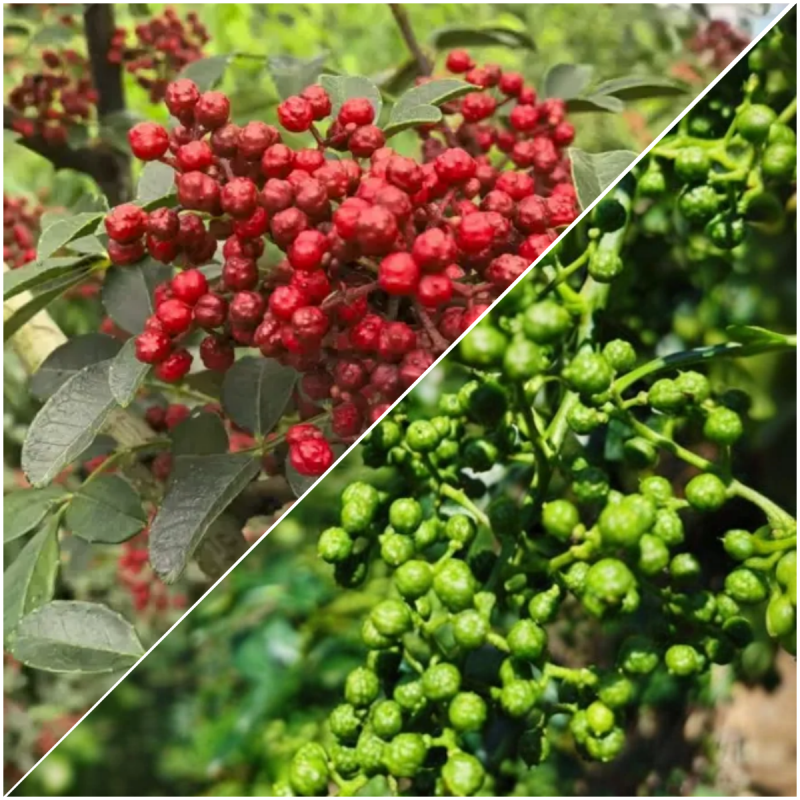

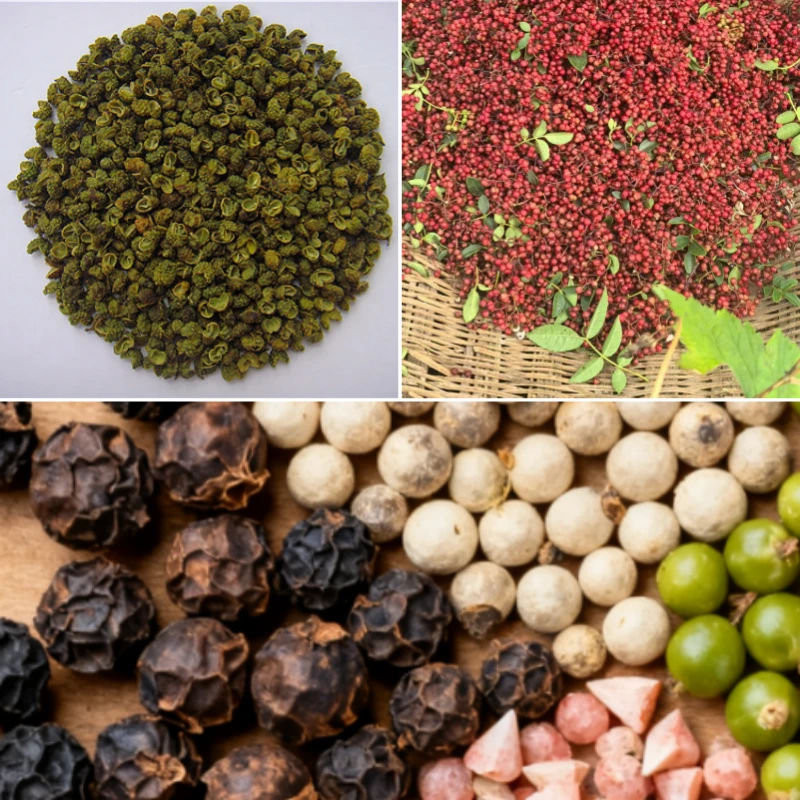

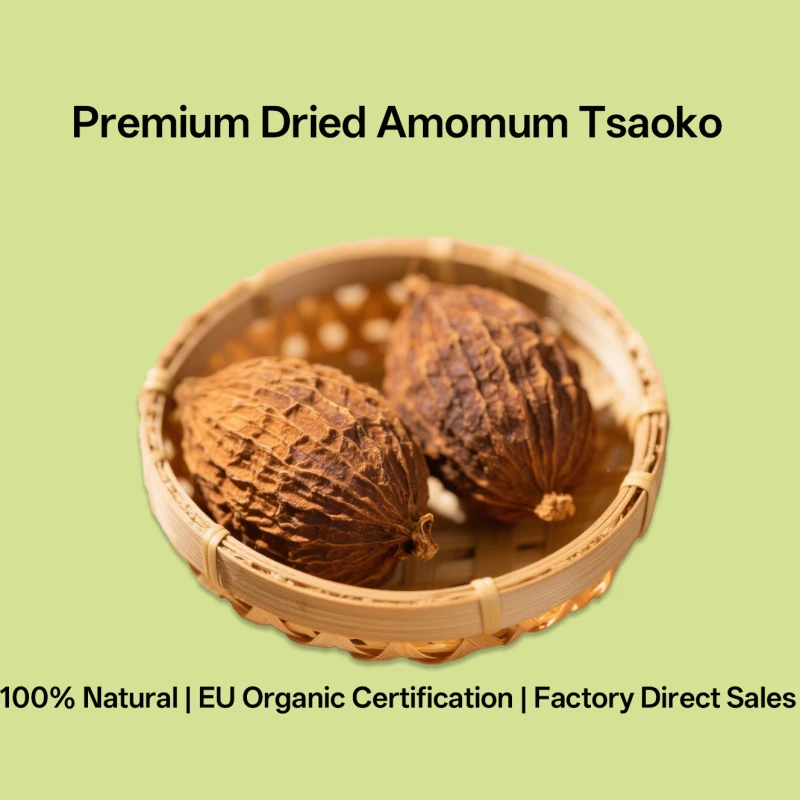
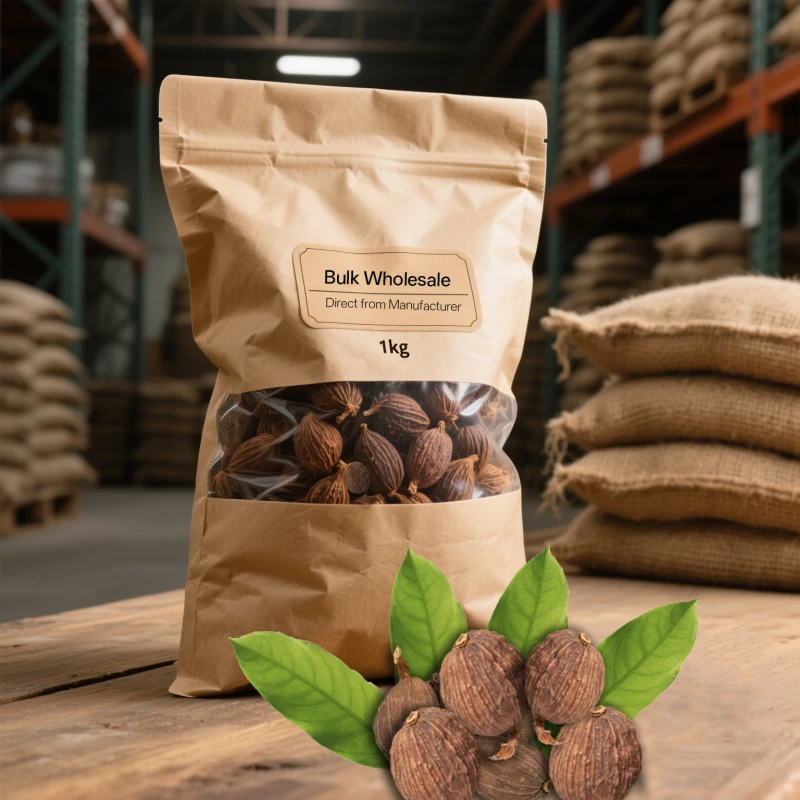
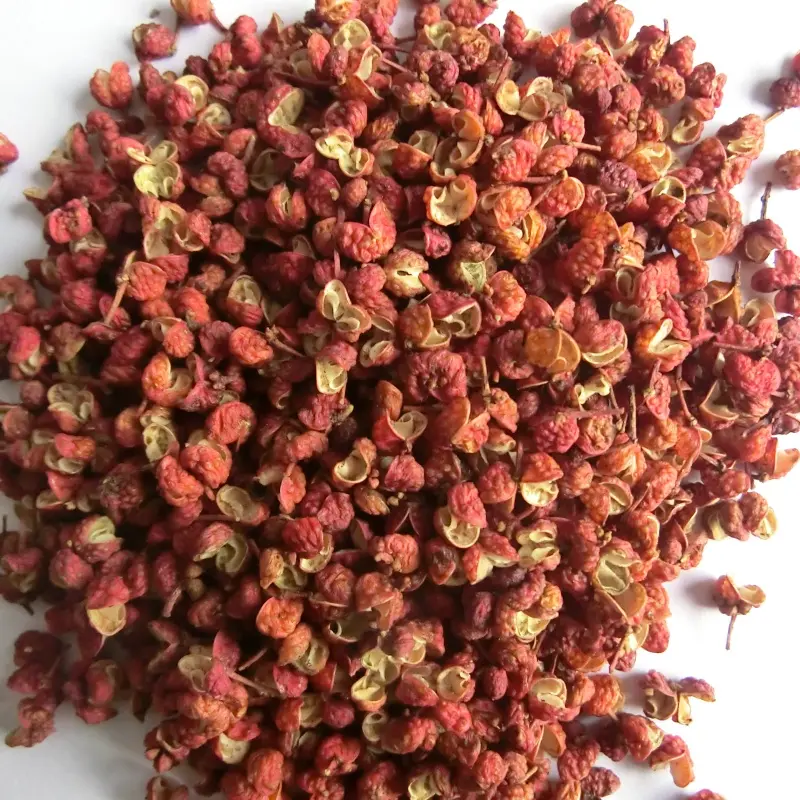
811.webp)

